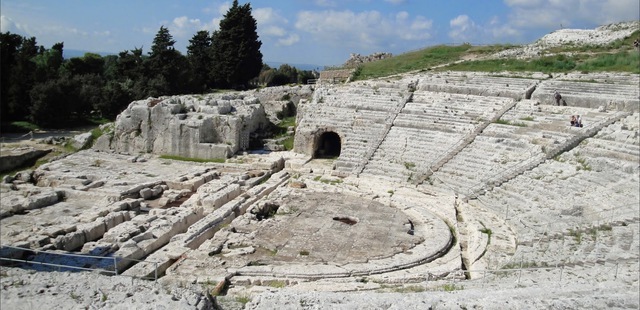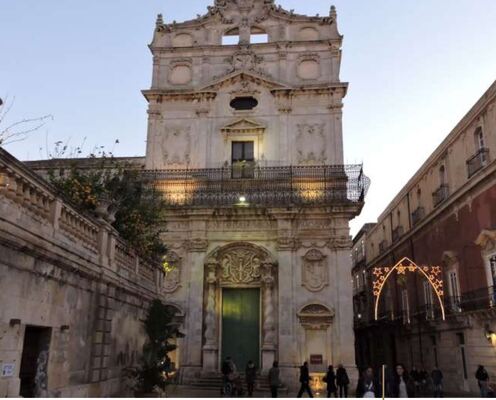Showing 19 attractions
8
4 reviews
8
4 reviews
Ortygia's Museo del Papiro offers a fine collection of papyrus documents and products, boats and an English-language film about the nifty material's history. — Lonely Planet
8
3 reviews
The city's most extensive catacombs lie beneath the Basilica di San Giovanni, itself a pretty, truncated church that served as the city's cathedral in the 17th century. — Lonely Planet
8
2 reviews
In the heart of Ortygia, this ranks as one of Italy's most beautiful piazzas. — Fodor's
8
3 reviews
The Greeks used this spring to establish themselves in this place, where geese and ducks now paddle happily. — Michelin Guide
8
3 reviews
The basilica, built in the Byzantine style on the site of the martyrdom of Santa Lucia, was given its current appearance in the 15C and 16C. — Michelin Guide
8
2 reviews
Caravaggio christened this amazing cave in the Latomia del Paradiso quarry: as a result of its exceptional acoustics, the tyrant Dionysus could, it is said, hear everything his opponents whispered. — Michelin Guide
8
2 reviews
Its vaulted 'roof' of earth collapsed in the 1693 earthquake, leaving it exposed to sunlight and making it an ideal place in which to plant its current gardens. — Lonely Planet
8
2 reviews
Built on the skeleton of a 5th-century BC Greek temple to Athena (note the Doric columns still visible inside and out), Syracuse's cathedral became a church when the island was evangelised by St Paul. — Lonely Planet
7
2 reviews
This 2nd-century Roman amphitheatre was originally used for gladiatorial combats and horse races. — Lonely Planet
7
2 reviews
Housed in a 13th-century Catalan-Gothic palace, this art museum's eclectic collection ranges from early Byzantine and Norman stonework to 19th-century Caltagirone ceramics. — Lonely Planet
7
2 reviews
The Catacombs of St. John contain some 20,000 ancient tombs, honeycombed tunnels of empty coffins that were long ago looted of their burial riches by plundering grave robbers. — Frommer's
7
3 reviews
Built on the tip of Ortygia by Frederick II von Hohenstaufen in the first half of the 13C, this sandstone fortress bears the name of a Byzantine general, Giorgio Maniace. — Michelin Guide
7
2 reviews
7
2 reviews
7
2 reviews
Built in the 6C BC, dedicated to Apollo, it was transformed over the centuries: into a Byzantine church, a mosque, then a church again under the Normans. — Michelin Guide
7
2 reviews
7
2 reviews
1 - 19 of 19 results














































